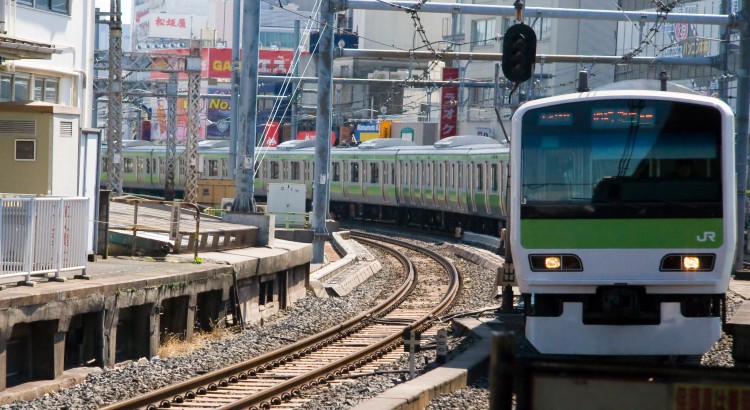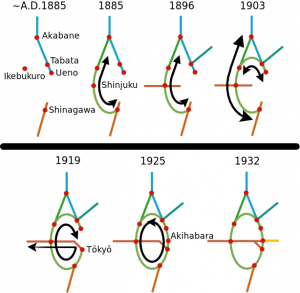The Yamanote line 山手線 is one of the busiest and most important train lines in Tokyo. It is a 34.5 km loop line covering some of the most important landmarks in the city and every train takes between 59 and 65 minutes to run a complete loop.
Origin of the name
Yamanote 山の手 (literally mountain hands) traditionally refers to the hills section inside of the city located west of the Imperial Palace. Although the Yamanote area cannot be defined exactly, in the Edo period it was comprised of the following areas of Tokyo: Yotsuya, Aoyama, Ichigaya, Koishikawa and Hongō.
The Yamanote Japanese word is formed by the kanji 山 (mountain), the kana の (no) and 手 (hand), but when referring the the train line, the word loses the genitive particle の, making it ambiguous to pronounce: 山手. It can be pronounced as やまて (yamate) or as やまのて (yamanote).
History of the Yamanote line
At the beginning, the Yamanote line only connected Shinagawa to Akabane, both in the traditional Yamanote area. That’s the reason it got this name. After few years, the Yamanote line continued expanding, until it reached the circular loop as we know it today.
- 1885 – Yamanote line is created the 1st of March, between Shinagawa Station in the south and Akabane Station in the north
- 1903 – The upper section between Ikebukuro station and Tabata station is created. Both stations already existed at that time.
- 1925 – The loop is completed, connecting the Kanda and Ueno stations.
Important stations
The Yamanote line has a total of 29 stations. Some of the most important ones are:
- Shibuya – It’s the fourth busiest rail station in Japan. It serves an average of 2.4 million passengers per day.
- Shinjuku – Being a major connection hub, it’s the busiest train station in the world. The station is used by 3.64 million people per day.
- Ikebukuro – It’s the second busiest train station in the world. Used by 2.71 million passengers every day.
- Ueno – It’s the station to reach the Ueno park and many Museums in the area.
- Tokyo – It’s the busiest station in Japan in terms of number of trains. It serves more than 3000 different trains every day.
- Shinagawa – Connects with the Tokaido Shinkansen line.




